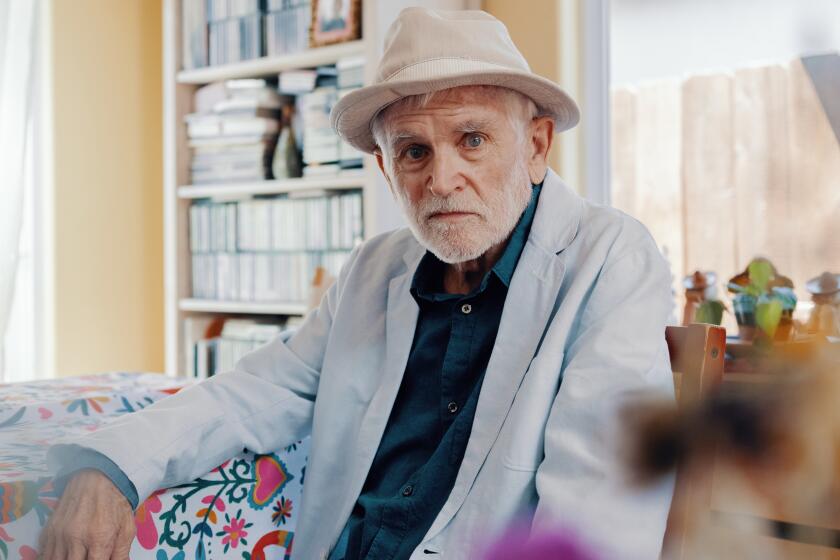Chat Room
- Share via
From the cheerful chastity of his screenplays for “The Bachelor and the Bobby-Soxer” (for which he won a screenwriting Oscar in 1947) and “Easter Parade,” to the innocent titillation of his TV confections “I Dream of Jeannie” and “Hart to Hart,” to stupendously best-selling popular fiction such as “The Other Side of Midnight,” Sidney Sheldon has made a career of pulling plums out of whatever pop cultural pies he’s plunged his thumb into. We talked to the 80-year-old writer at his Holmby Hills home just before the release of his 15th novel, “The Best Laid Plans,” which chronicles the affairs--romantic and otherwise--of a newspaper publisher and an American president.
Q: According to the Guinness Book of World Records, you’re the most translated author in the world.
A: They checked it out, and I’m in 51 languages in 180 countries. And the sales now--they gave me a party in New York to celebrate the sale of my 275 millionth book.
Q: How do you manage to appeal to such a wide audience?
A: If you sit down and say, “How am I going to please a truck driver and a schoolteacher?” you’d go crazy. That won’t make it a bestseller. What makes a bestseller is the reader caring about the characters. I’m read by the royal family, I’m read by truck drivers in India and schoolteachers in Norway.
Q: Tell us, please, about “I Dream of Jeannie.”
A: I knew there had been pictures about genies before, but it was always Burl Ives--some big man saying, “What can I do for you?” And I thought it would be fun to have a beautiful, nubile young woman saying, “What can I do for you?”
Q: And there will be a “Jeannie” movie?
A: They’re preparing a screenplay for it at Columbia right now.
Q: It is, of course, complete coincidence that your latest protagonist, Oliver Russell, happens to be a charismatic and youthful Southern governor with a reputation for philandering who ascends to the presidency, right?
A: The characters are fictional. All fictional.
Q: As prolific as you’ve been, how do you actually write?
A: I dictate everything to a secretary and she transcribes it. I’ll do up to 50 pages a day, but when I get those pages, I’ll do a dozen to 15 total rewrites before I ever let my publisher see them.
Q: So you essentially talk your story first, in the oral tradition.
A: I was in Morocco a couple of years ago, and I went to the souk--the big outdoor market--and in one area there was a fire-eater with a crowd around him. But in another there was a circle of people sitting and a man just talking. I asked my guide what was going on, and he said, “the man is a storyteller, they pay him to tell them stories.” I felt I was related to that man.
More to Read
Sign up for our Book Club newsletter
Get the latest news, events and more from the Los Angeles Times Book Club, and help us get L.A. reading and talking.
You may occasionally receive promotional content from the Los Angeles Times.







